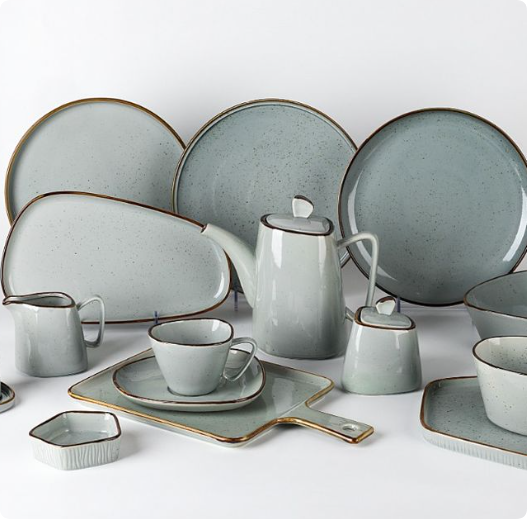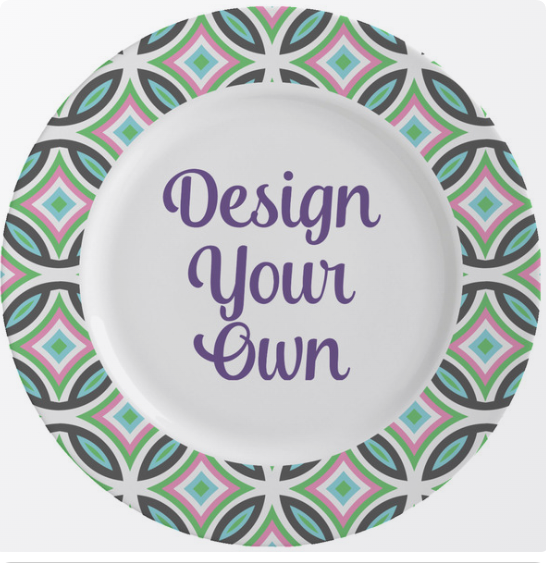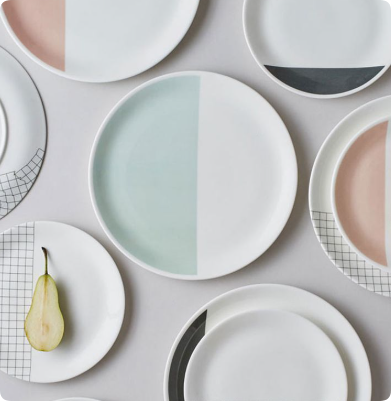Ceramic dinnerware has long been a staple of table settings around the world, known for its durability, versatility, and aesthetic appeal. Over the years, we’ve seen countless design trends come and go, but one trend that has shown staying power—and is poised to shape the future of ceramic dinnerware—is the use of geometric patterns. These intricate, often bold designs are not only visually striking but also offer manufacturers and consumers a wealth of options for customization and differentiation.
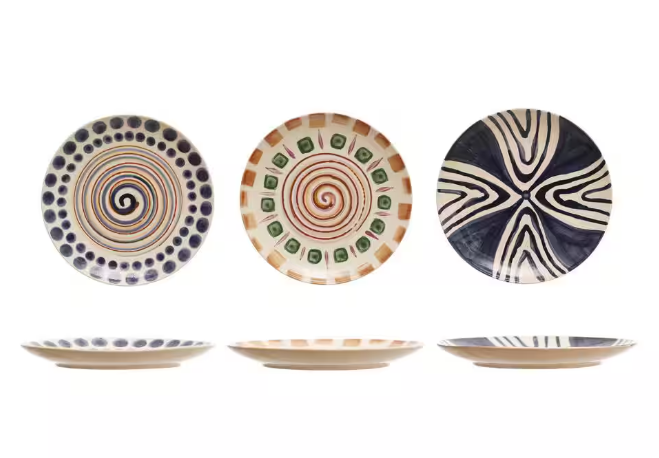
As we move deeper into 2025, it is clear that geometric patterns in ceramic dinnerware are more than just a passing trend—they are a defining feature that reflects changing consumer tastes, emerging design principles, and the evolution of global dining aesthetics. This article will explore how geometric patterns are influencing the design and manufacturing of ceramic dinnerware, their growing popularity among consumers, and what manufacturers and retailers need to know to keep up with this trend.
The Rise of Geometric Patterns in Ceramic Dinnerware
Geometric patterns, defined by sharp lines, repetitive shapes, and symmetry, have found their place in everything from fashion to architecture—and now, in ceramic dinnerware. These patterns are catching the eyes of both consumers and designers for their ability to convey modernity, sophistication, and a sense of structure.
In the past, dinnerware designs leaned heavily toward floral motifs or solid colors. However, as more consumers seek unique, artistic pieces to enhance their dining experience, geometric patterns offer an exciting alternative. These patterns range from simple, minimalist lines to complex, intricate shapes, making them adaptable to a variety of aesthetics, from ultra-modern to more traditional settings with a contemporary twist.
Geometric patterns in ceramic dinnerware can be traced back to the Art Deco period, but their resurgence in modern design is being driven by several factors:
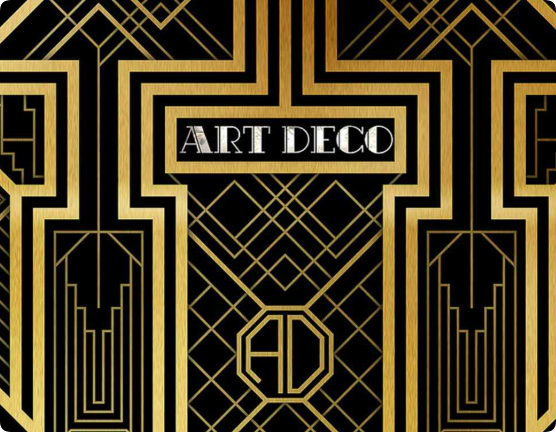
- Aesthetic Appeal: Geometric patterns create a visual balance that is often associated with elegance and sophistication.
- Versatility: These patterns can be applied to various shapes, sizes, and forms, from dinner plates to bowls and cups.
- Consumer Desire for Uniqueness: As consumers increasingly look for personalized and distinctive dining experiences, geometric designs offer a fresh, customizable option.
Why Are Geometric Patterns Gaining Popularity?
To understand why geometric patterns are gaining momentum in the world of ceramic dinnerware, we need to consider several factors:
1. Cultural Shifts Toward Minimalism
The rise of minimalism in interior design, especially among millennials and Gen Z consumers, has had a significant impact on dining trends. Simple, clean lines with geometric patterns fit perfectly into this minimalist aesthetic, aligning with modern values of functionality and visual clarity. Dinnerware with geometric designs not only complements minimalist home decor but also enhances the overall dining experience by introducing a subtle but striking visual element.
2. Social Media Influence
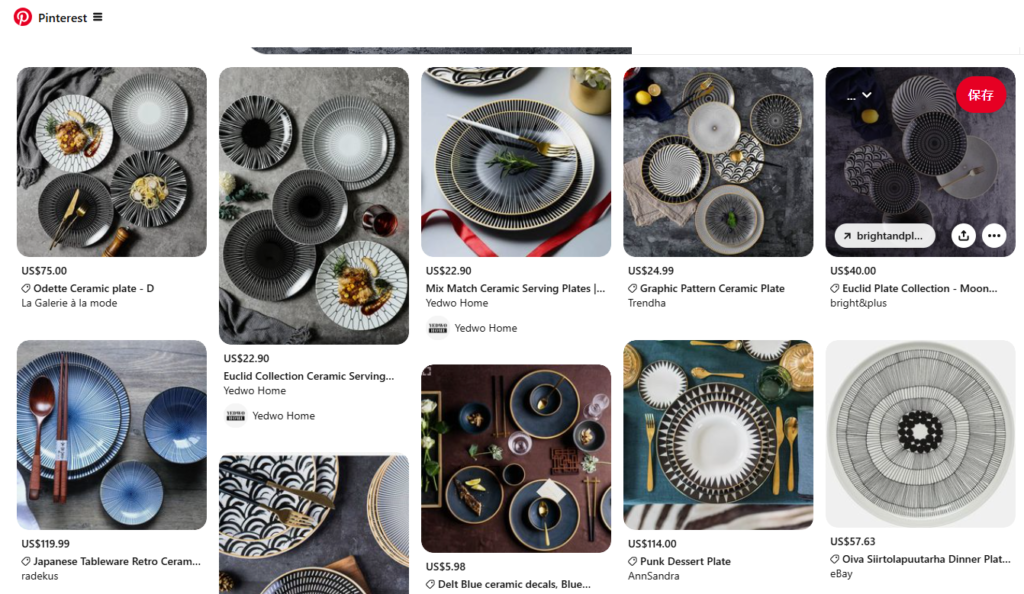
Platforms like Instagram and Pinterest have played a huge role in popularizing geometric patterns in ceramics. Influencers and interior designers often share their table settings featuring geometric dinnerware, which inspires their followers to incorporate these designs into their own homes. As a result, geometric patterns are now seen as a status symbol of sophistication and good taste.
3. Global Influence of Contemporary Art
Contemporary art, especially abstract and geometric art movements, is another key influence on ceramic dinnerware designs. The abstract patterns, sharp lines, and bold color choices seen in modern art have naturally found their way into ceramics, resulting in dinnerware pieces that are both functional and artistic.
The Impact of Geometric Patterns on Ceramic Manufacturing
Geometric patterns are not just a design trend; they also have a profound effect on the ceramic manufacturing process. These patterns often require more precise craftsmanship, innovative glazing techniques, and creative molding processes. Let’s take a closer look at the manufacturing side of geometric-patterned ceramic dinnerware.
1. Advanced Molding Techniques
Creating intricate geometric patterns often involves advanced molding techniques, where the design is either pressed into the clay or painted onto the surface. This process requires skilled artisans and sophisticated machinery to ensure that the patterns are consistent and precise. For manufacturers, this means that achieving high-quality geometric designs can require higher investment in technology and labor.
2. Use of Color and Texture
Geometric patterns often rely heavily on the interplay between colors and textures. Different glazing techniques are used to create a contrast between matte and glossy surfaces or to highlight certain areas of the pattern. This can add depth and dimension to the pieces, making them more visually appealing and dynamic.
3. Customization Opportunities
Geometric designs are highly customizable. Manufacturers can adjust the scale, color palette, and pattern layout to suit different markets or customer preferences. Whether catering to high-end customers looking for bespoke designs or mass-market retailers requiring standard designs, geometric patterns provide a wide range of possibilities for manufacturers to explore.
Geometric Patterns in Different Ceramic Dinnerware Categories
Geometric patterns can be applied to a wide variety of ceramic dinnerware items, each bringing a unique aesthetic to the table. Below is an overview of how geometric designs are being incorporated into different categories of dinnerware.
| Product Type | Geometric Pattern Examples | Target Audience |
|---|---|---|
| Dinner Plates | Bold lines, chevron patterns, circles, hexagons, overlapping squares | Modern homeowners, minimalist decor enthusiasts |
| Bowls | Asymmetrical patterns, grid patterns, triangular motifs | Young professionals, contemporary restaurants |
| Cups & Mugs | Symmetrical designs, angular shapes, tessellated patterns | Coffee lovers, artistic consumers |
| Serving Platters | Large-scale geometric designs, concentric circles, abstract shapes | Luxury diners, fine dining establishments |
| Tea Sets | Interlocking geometric shapes, tonal contrasts, stylized patterns | Tea connoisseurs, cultural collectors |
As you can see, geometric patterns offer a great deal of flexibility across various product categories, allowing manufacturers to tailor designs to specific customer groups. Whether you are catering to modern, minimalist tastes or more eclectic, artistic preferences, geometric patterns have the ability to stand out in any setting.
Case Study: How Leading Brands Are Incorporating Geometric Patterns
Several well-known ceramic brands have embraced geometric patterns as part of their design language. Let’s examine how these brands have used geometric elements to create unique, on-trend collections.
Brand 1: Royal Worcester
Royal Worcester, known for its fine bone china, has incorporated geometric patterns into several of its dinnerware collections. The use of gold accents and fine lines on angular shapes has allowed them to stay at the forefront of modern design while maintaining a connection to their traditional heritage.
Brand 2: Wedgwood
Wedgwood, another luxury brand, has adopted geometric patterns in both minimalist and bold styles. Their “Geometric” collection features simple patterns such as hexagons and triangles, bringing contemporary flair to their classic porcelain material.
Brand 3: Iittala
The Finnish brand Iittala is known for its sleek, modern designs. Their ceramic dinnerware collections feature geometric designs that focus on balance and symmetry. By using clean lines and abstract forms, Iittala has attracted a new generation of design-conscious consumers.
Brand 4: Villeroy & Boch
Villeroy & Boch, a major player in the ceramic dinnerware market, has incorporated geometric elements into their collections, particularly in their high-end ranges. The use of intricate geometric patterns has helped them maintain their position as a leader in the luxury ceramics market.
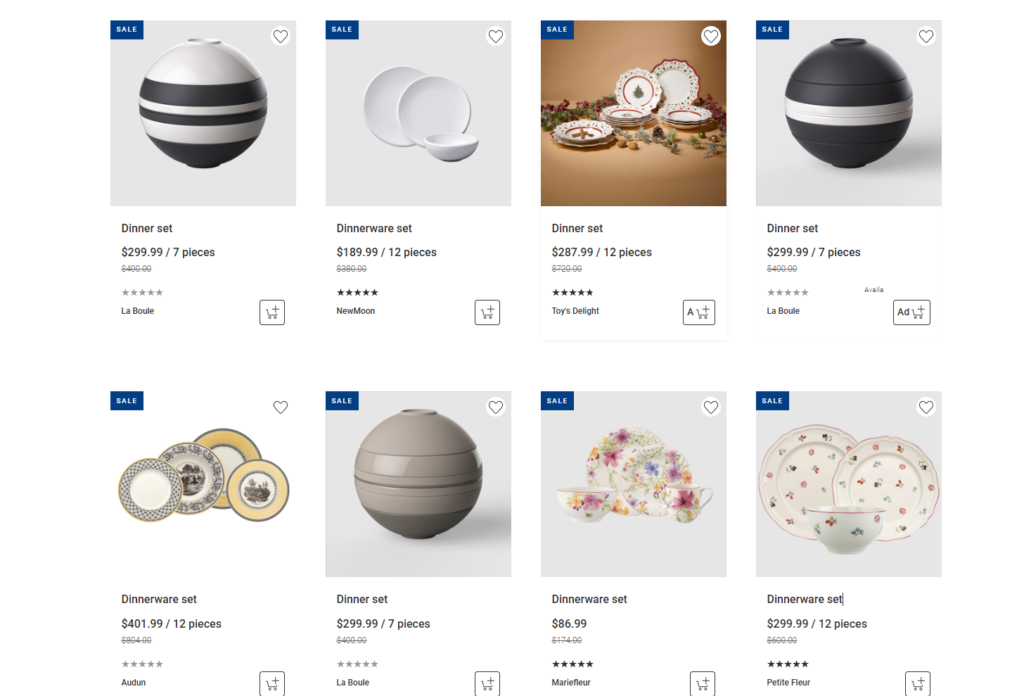
What Manufacturers Need to Know About Geometric Patterns
For ceramic manufacturers, geometric patterns are more than just a design choice—they are an opportunity for differentiation and innovation. To capitalize on the growing demand for geometric designs, manufacturers should consider the following:
- Invest in Precision: High-quality geometric patterns require precision in both design and manufacturing. Investing in advanced molding techniques and glazes will help ensure that patterns are consistent and visually appealing.
- Embrace Customization: Offering customizable geometric designs can set your brand apart in a competitive market. Customers are increasingly looking for unique, personalized dinnerware to reflect their individual style.
- Monitor Trends: Stay updated on emerging design trends to keep your offerings fresh and relevant. Geometric patterns are continually evolving, so staying ahead of trends will ensure your products appeal to a broad range of consumers.
Conclusion: EKA’s Role in the Future of Geometric Ceramic Dinnerware
As geometric patterns continue to shape the future of ceramic dinnerware, manufacturers like EKA are well-positioned to lead the way. Based in China, EKA is a premier ceramic dinnerware manufacturer that specializes in producing high-quality ceramic products with intricate, customizable designs. Whether you are a B2B buyer seeking to source geometric-patterned dinnerware for your retail collection or a company looking for bespoke designs, EKA can deliver exactly what you need.
EKA’s expertise in ceramics and commitment to innovation allows us to produce dinnerware that is not only functional but also visually striking. By leveraging advanced molding techniques, cutting-edge glazing processes, and a deep understanding of consumer trends, we can help you bring the latest geometric designs to market, ensuring that your products stand out in an increasingly competitive global marketplace.
Ready to explore how EKA can elevate your ceramic dinnerware collection with bold geometric patterns? Contact us today to discuss your custom OEM and ODM orders.

